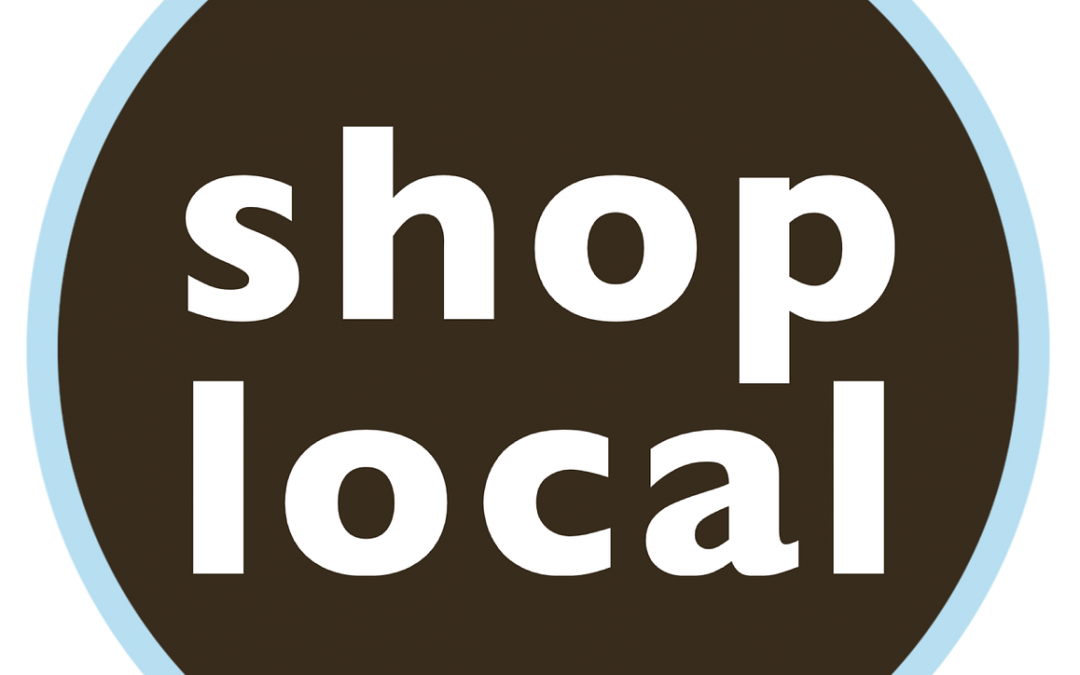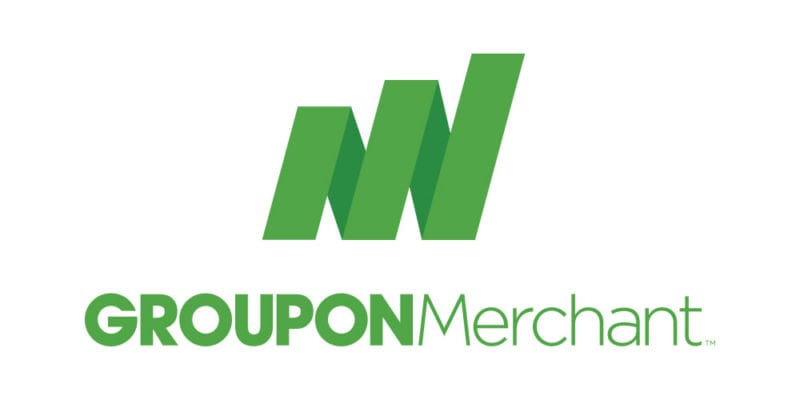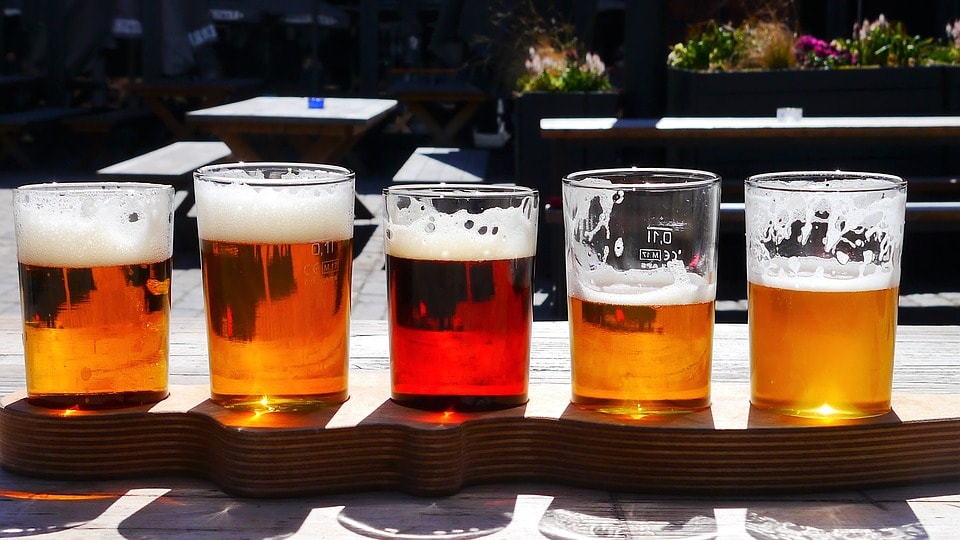
The terms “Shop Local” and “Small Business Saturday” have gained popularity as people acknowledge the benefits of choosing their independent, locally owned shop instead of a large nationally-business Supporting small businesses helps stimulate your local economy. The money you spend is often being put back into your community. Locally owned shops and restaurants make your city and town unique, chains can be anywhere, but many independent businesses are one of a kind. Choosing a local coffee shop or bakery over Starbucks and Dunkin’ Donuts helps gives business to a small business owner, helping them stay in business and not run out of business by a large corporation or chain.
Why Restaurants Choose Local Businesses
Fresher Foods
Fresh foods taste better. Restaurants can choose to get their meats, seafood, cheeses, and produce from local farmers and suppliers rather than purchase from nationally owned suppliers that have to ship the goods over thousands of miles. It may not be possible for every ingredient and requires seasonal menu offerings, but the taste and local support cannot be beaten. Meals in the US take around 1,500 miles to get from the farm to the customer’s table (https://cuesa.org/learn/how-far-does-your-food-travel-get-your-plate).
Premium price
Customers are willing to pay a premium price for locally sourced and sustainable goods (https://lib.dr.iastate.edu/cgi/viewcontent.cgi?article=2347&context=etd). Foods labeled as organic and local are seen as tasting better by consumers (https://www.theguardian.com/lifeandstyle/wordofmouth/2014/apr/22/local-seasonal-produce-taste-better). Local produce can travel at peak ripeness, as they are traveling shorter distances. Local farms and butchers may charge higher prices, but customers are willing to pay more too. Local farms are more likely to offer organic produce, meats, and cheeses, which customers enjoy.
Marketing
Restaurants can use local sourcing as a marketing tool. Customers enjoy businesses that support other local businesses. Farm-to-Table is a newly coined term for restaurants that use local farmers and butchers to supply their ingredients. Local food can feel more authentic and give customers a unique experience, especially to out-of-towners.
Eco-Friendly
Customers are able to get altruistic fulfillment through choosing a menu item or restaurant that supports local businesses; they feel like their dining choice has rippling positive benefits. Current food trends lean towards health and sustainability. Organic menu offerings are seen as healthier and more environmentally friendly. The National Restaurant associate found that 34 percent of customers felt organic or environmentally friendly food was an important factor for restaurants (http://www.restaurant.org/Manage-My-Restaurant/Food-Nutrition/Trends/6-strategies-to-integrate-locally-sourced-food).
New Meal Ideas
Local foods are often seasonal, which can lead to new ideas for specials or menu items. Starbucks created a new trend with their Pumpkin Spice offerings that are only available in fall, which is pumpkin season. Seasonal menus can drive sales for certain customer favorites that they know will only be available for a limited amount of time. Seasonal menus also present a marketing opportunity to push new items and specials based on special seasonal ingredients.
Support Other Small Businesses and Build Relationships
You may be surprised to find better deals and discounts when doing business with other small businesses. Free food, leads, and positive word-of-mouth goes a long way with local business. Needing a new website? Try using a local graphic designer and web builder. They may be willing to lower their price if they can advertise on your website and if you spread the word to other restaurant and businesses that could use their services. Instead of choosing a large corporate point of sale company, customer loyalty, online ordering, or digital signage, use a local business. Local businesses can usually offer better prices, customer service, and reliability. When you need customer or tech support, you can connect with a real, local employee (who probably knows you by name) and be given top priority.
You are never just a “number” to a local business, you are part of the family. They value your business and will to go the extra mile to make sure you are happy. Large national companies are not able to give customers the one-on-one attention that small, local businesses can. You can cultivate relationships within your community, giving mutual support, spreading positive word of mouth, and referring leads. Local independent businesses provide an experience and customer service that national businesses often cannot compete with.

Groupon is a marketing tool that businesses can use to get customers in the door. Groupon is seen as a trusted service, where users can purchase a deal for a particular restaurant, cafe, bowling alley, or any small business. Should you use Groupon to market your new restaurant? What are the pros and cons of Groupon? Is Groupon more effective than Google Adwords or Facebook advertising?
What is Groupon?
Groupon.com is an online marketplace that advertises businesses offering discounts on goods and services. Customers can find “food and drink” deals in their area as well as “things to do.” Groupon connects to potential customers through email marketing as well as their website and mobile app. Most Groupons offer 50 percent off the retail price. What is unique about Groupon is that customers pay upfront. A restaurant could have a deal that offers “$25 for $50 worth of food and drinks.” The customer would pay via Groupon and then receive the gift certificate which they can print out or present the barcode using their mobile phone.
How much does it cost me?
Groupon takes 50 percent of your profit according to FitSmallBusiness. If you’re Groupon was “$30 dollars for $60 dollars worth of food and drink” then you will earn $15 dollars and Groupon will earn $15 every time a customer purchases the deal from the site.
Why use Groupon?
The 50 percent margin may seem steep, but Groupon is a marketing tool, not a sales tool. Business owners in the restaurant industry can use Groupon to get customers in the door. Once you have them at a table, servers can upsell (getting the customers to spend more than the coupon). They may bring friends and if the experience is positive, could become repeat customers or give a good review.
Groupon for Local Marketing
The main sell point of Groupon is the local marketing. The website is designed to show Groupon users deals in their area. Your restaurant will be marketed to people looking for food and drink deals in a specific area. This visibility is great for new restaurants if they are able to handle the very small profit margins.
Pros:
- A chance to upsell and create repeat customers
- Visibility for new restaurants
- Groupon encourages customer reviews
Cons:
- Small profit margins
- Attracts deal-seeking customers
Groupon vs Google Adwords or Facebook Advertising
Groupon can be an easier platform for business owners who do not have marketing experience. Google Adwords and Facebook advertising can be difficult and overwhelming for those who have never advertised on these platforms before.
Groupon also has no upfront costs. Groupon’s profits are only sales-based. Google Adwords and Facebook advertising are pay-per-click advertising services that require a budget upfront and need to be set-up and monitored by the business owner. Groupon handles all of the advertising aspects.
Google Adwords and social media advertising can be better for existing restaurants looking to raise brand awareness, especially for an event, if the business owner has a marketing coordinator on staff or knows how to use these services.
Groupon is a great way for new restaurants, cafes, bars, bowling alleys, and other small businesses to reach local customers without a large upfront cost. There is no marketing knowledge or experience needed, Groupon handles all of the advertising. Groupon takes 50 percent of the profits from each deal and should be used for marketing not sales. Groupon helps get customers in the door, where servers can upsell and create repeat customers.

Free Wifi is a perk that some cafes, restaurants, and businesses offer to customers. Most restaurants already have Wifi to run their point of sale systems. You can upgrade to an affordable small business Wifi plan and offer it to customers. Instead of offering free nuts and candy, businesses offer Wifi as a freebie. Depending on what kind of restaurant you have, free Wifi may be worth offering to customers.
Why offer free Wifi to customers?
It can encourage them to stay longer, hopefully ordering more food and drinks. Your cafe can become a virtual workspace or a meet up for clients, attracting new customers. Students can choose to have a sandwich and a cup of coffee are your restaurant instead of the library.
According to the LA Times (data from consulting firm the Yankee Group)
- “96 percent of respondents prefer businesses that offer free Wifi”
- “79 percent of businesses say it keeps customers happy while they wait for service”
- “64 percent of respondents have chosen a restaurant based on free Wifi availability”
How much does Wifi cost?
Wifi plans are priced by the amount of data used and speed. The prices can also vary depending on the provider. Only some providers will offer business Wifi in your area. A medium sized restaurant will not need the same Internet power as a large office space. Many providers offer small business Wifi, which is more powerful than home Wifi, but less than what a large office or building would need.
Example:
AT&T small business Wifi starts at 60 dollars a month for 100 Mbps Internet speed with a price-lock guarantee of two years. Installation can cost up to a 100 dollars, but you may be able to find free installation with a promotion.
How fast should a small business Wifi be?
According to Quickbooks, 10 users will need 1.2 Mbps, 20 users will need 2.4 Mbps.
Should I make customers use a password for the Wifi?
If you live in a densely populated area, with lots of apartments nearby, you may find moochers. People who live in range of your Wifi may use it if there is no password. If there isn’t many houses or apartments nearby, the chance of moochers is lower. If you find that people are coming in just for the Wifi, you could choose to only give out the password with a purchase.
Facebook Check-in for Free Wifi
Some routers allow you to give customers Wifi access after they have “checked in” to your business’s Facebook page. Facebook check-in can help grow your social media presence and potentially reach new customers. Whenever customers check in at your business, all of their Facebook friends can see it. You can also give a “time out,” only allowing customers to use the Wifi for an hour or two after checking in.
Marketing
Make sure to advertise that you’re offering free Wifi. You can add “free Wifi” to your attributes under your Google My Business page. You can add a sticker to your door, or post about it on your social media channels.
Some business Internet providers offer “splash pages,” which is similar to a landing page. When a customer wants to sign on to your Wifi, they are taken to a landing page where you can add custom content before they are connected. You can offer promotions, coupons, or show an event calendar. You can choose for the Wifi to be password protected or just put a “connect” button that will let them use the internet.
Customers are beginning to expect free Wifi at cafes and smaller restaurants. Free Wifi is also welcome at even larger restaurants and chains. It can encourage customers to post pictures on social media, which is free advertising. You can attract new customers looking for a spot to do work and grab a coffee or a bite to eat. Your restaurant or cafe could be a meetup place for businesses and virtual employees.

Protected by the anonymity of the Internet, customers sometimes write reviews that can be harsher than what they would be comfortable saying in person. Restaurants, cafes, breweries, and other food service establishments can be seen as solely a business, without any thoughts of the people who work at it. Behind every restaurant is the owner, manager, and staff who put their heart and soul into each dish. How do you handle bad restaurant reviews? Should you respond to negative reviews online?
Why Online Reviews Are Important
First, it’s important to be aware of what customers are saying, both the negative and positive. Negative reviews can be disheartening, but are helpful if little changes can be made to improve your restaurant. If multiple customers are complaining that the fries are too salty, try them yourself and see. Customer complaints can alert you to little problems that may have slipped your notice, like unclean bathrooms. Bad reviews can also hurt potential business. New customers who are debating whether or not to dine at your restaurant may do a quick “Google Search” to see what the reviews say. Bad reviews and poor ratings can lead them to choose a competitor.
Where to Find Your Restaurant’s Reviews Online
Popular restaurant review sites are Yelp, Google My Business, Zomato, Zagat, and Trip Advisor. You can also check the comments on your restaurant’s social media page. If you don’t have any social media pages for your restaurant, read why your restaurant needs an online identity.
How to Respond to a Negative Review
It can be hard not to take bad reviews personally. Customers can be rude and your first instinct will be to refute the negativity and defend your restaurant. According to the National Restaurant Association, that’s the wrong move and can make the situation worse. Read the review without the emotions and see if there is any room for improvement. If you’re too emotionally charged, consider having an employee to respond to the customers instead.
Entrepreneur.com recommends responding regularly to customer complaints online. Some sites like Yelp let you choose to leave a public comment or privately message the customer. Polite public responses expressing concern may be more helpful, as it will show other customers that you care, are listening, value their feedback, and are trying to fix the issues. Don’t forget to respond to the positive reviews too!
Yelp’s 3 Things to Keep in Mind as you respond to customers:
- Your reviewers are your paying customers
- Your reviewers are human beings with (sometimes unpredictable) feelings and sensitivities
- Your reviewers are vocal and opinionated (otherwise they would not be writing reviews!)
Negative reviews online can be discouraging and aggravating. Sometimes it can feel like a thousand things can go right, but reviews tend to highlight the one thing that went wrong. Regularly checking online reviews can give a better indication of how customers are feeling, than checking for happy faces and going up to customers after their meal and asking “how was everything toinght?” Many customers feel more awkward voicing their opinion in person, and would rather post negative comments online. Respond politely to reviews (the positive ones too) to show customers you value their opinion and are working on making changes whenever posisble.

In 2017 people moved away from the bar scene and into the cool and occasionally hipster brewery scene. Drawn to the allure of craft beer, patrons flocked to breweries to relax and play shuffleboard. Deciding on a point of sale system for you brewery can be different process than a traditional bar or restaurant. Choosing the best point of sale system for your brewery depends on what you are looking for, reporting, handheld tablets, or customer loyalty. The right point of sale system will help your team work efficiently, boosting profits, and increasing the overall customer experience.
Brewery Point of Sale Checklist
Inventory
Whether you brew your own craft beer or stock bottles and cans of your local favorites, keeping track of inventory is an important function of your point of sale. Inventory management allows you to monitor product stocks to make sure you never run out of customer favorites. See which beers aren’t selling well and discontinue them to make room for the best-sellers. Easy inventory management is important if your beer list is frequently updating. Be able to add new items and change prices quickly while tracking their success.
Reliability
Can the point of sale system handle your industry? Be realistic about the conditions the system will be under. During rushes beer may spill, and the system make take an elbow or two. An iPad system may seem chic and trendy, but one unlucky spill, hit, or drop could end up costing you 600-800 dollars. Your system should be the last thing you worry about. Don’t be that business that has to tell customers “cash only” and turn away patrons because your POS system or wifi is down. Sometimes you only get one chance with a customer before they head over to your competition.
Reporting
Your POS system should be more than an electronic cash register. Each customer transaction offers valuable reporting information that is vital to your business. Analyze staff performance and schedule smartly. Use this data to take control and make your brewery as efficient as possible. Go beyond spreadsheets and use graphical reporting to give visual representations of your brewery’s performance. Whether you opened your brewery out of business savvy or love of craft beer, understand your business’s cash flow. Give yourself option to create and receive reports remotely. Schedule regular reports and have them sent to your inbox, or if you have a sudden question, create a report from your laptop at home.
Handhelds
Do you offer table service? Handheld tablets can make a huge difference in your business. Servers are quicker and more productive with handhelds. They can input orders at the tables while the customer is speaking, minimizing errors. Bartenders and servers do not need to write down orders or try to keep them in their short term memory as they wait in line at the POS station. Small touchscreen tablets allow bartenders and servers to keep up with the customers and place orders in real time. Faster order input means faster order delivery, which means more profits for your brewery.
Retail
Are you serving just beer and snacks, or merchandise too? Merchandise like shirts, koozies, and decals help spread brewery brand awareness. What about beer to-go? Does your point of sale support a scanner? Don’t limit your offerings!
Promotions
Looking to bring in customers for happy hour? Need to sell the rest of a beer? Run promotions like BOGO or timed discounts like happy hour to attract customers and control your sales. Your brewery POS system should make promotions a breeze. Set happy hour pricing to immediately go into effect at 4pm on Friday. Set and forget. Create different promotions that you can set with a push of a button. Your point of sale system should make your life easier, not harder!
Bonus Features
Digital Signage
Paper menus are becoming passé, especially for the brewery industry. You may have wet tables, changing prices, or beers on rotation, which makes paper menus a major hassle. Digital signage can easily turn any TV into a menu board. Save costs on printers and paper, and use technology to your advantage. Updates your menu in seconds if you sell out of an item or want to run a special. You can also integrate other features like social media feeds, photos, and advertisements to market your brand.
Loyalty
It’s 2018, paper punch cards are a thing of the past. Your customers want to be rewarded for their patronage in unique ways. Check your wallet, how many paper punchcards or loyalty cards have you kept over the years? Customer rewards have turned digital. Loyalty programs are becoming web or app based. Give your customers tailor rewards. Why give the same reward to a customer that comes once a month and orders one beer and the customer that comes every Friday and Saturday and buys multiple beers? Modern customer loyalty isn’t just for customers. Digital loyalty programs allow you to use your customer data for marketing and to help understand your demographics. Communicate with your customers using text message or push notifications. Send them promotions, coupons, or information on events and specials right to their phones.
Choosing a brewery point of sale is an important decision that has a dramatic effect on your business’s efficiency and profits. Make the most out of each customer transaction, using the data to understand your business from every aspect. Make sure your brewery point of sale supports all of your business’s need and allows you to grow.





